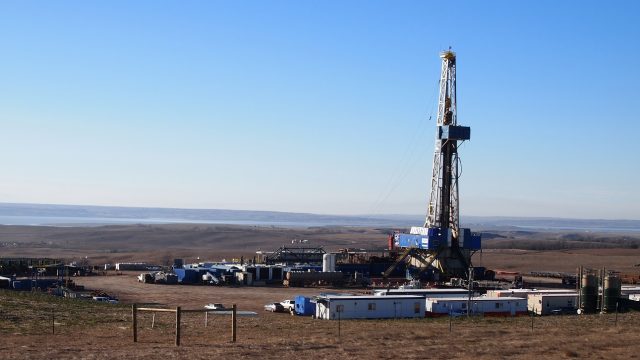North Dakota Employment Grows Slightly Despite Oil Slowdown

A drilling rig operates on Friday, Nov. 20, 2015, south of Tioga, N.D. Amy Dalrymple/Forum News Service
With North Dakota’s oil boom fading everyone is watching the state’s economy closely. The slowdown in oil and gas activity has hit the state’s revenues hard, but it can be hard to see too much difference in the state’s labor market.
Today North Dakota Job Service issued its most recent jobs report. The state’s seasonally adjusted unemployment rate was 2.8 percent in January of 2016. It was 2.7 percent in December, and 2.7 percent in January of 2015.
So, not much has changed. Meanwhile, both the number of people employed in the state and the number of people who are unemployed grew as well compared to last January.
The unemployed number grew a lot more, by nearly 1,000 people, but the total number of people employed grew by about 100 people. Both the size of the state’s labor force, and the number of people working, are significantly higher than in January of 2014.

Here are the trend lines for the civilian labor force (basically the number of people available to work in the state) and the state’s total employment:

It’s actually pretty remarkable how stable North Dakota’s job market has been despite the oil slowdown. “There are 145 total jobs lost for every [oil] rig pulled,” energy analyst Michael Filloon wrote for SAB last week. Since the peak, we have lost 177 rigs in North Dakota. This estimate would produce an estimated total job loss of 25,665.”
So why aren’t those workers showing up in North Dakota’s job numbers?
A lot of the workers probably just left the state when the jobs dried up.
Others probably got absorbed into the state’s labor market in other ways. North Dakota has a nearly perpetual labor shortage, as UND economist David Flynn noted in a SAB post last month. Someone losing their oil industry-related job can probably find another job pretty easily.
Heck, earlier this month the state was still reporting more job openings than there were unemployed people.
Either way, the state’s job market seems stable. For now.




